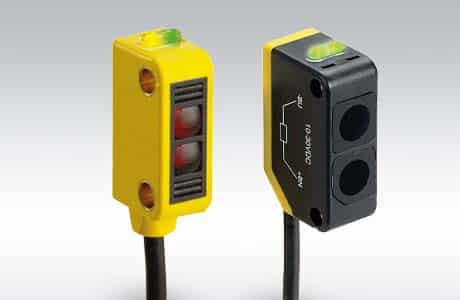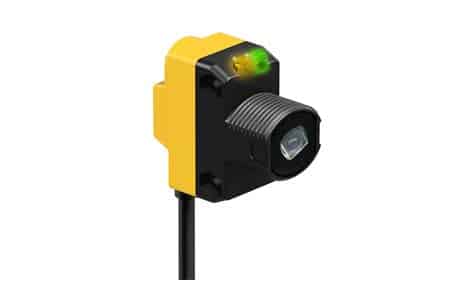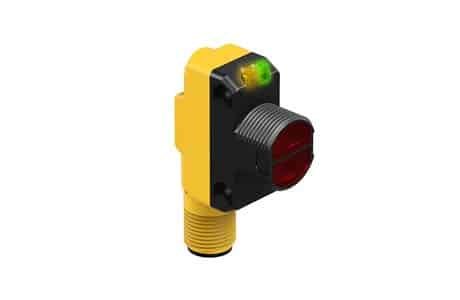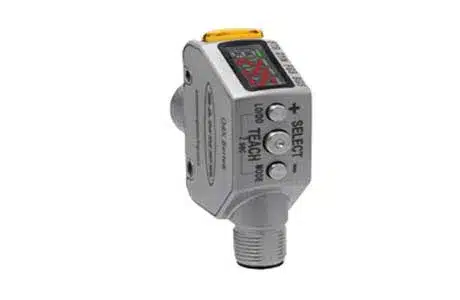Turck Photoelectric Sensor: Diffuse Mode Sensor
IndMALL presents an extensive range of Turck Photoelectric Sensors, designed for varied industrial applications. These Turck sensors, renowned for their precision and durability, are crucial in automating and optimizing production processes. Our collection includes Through Beam Sensors, Retro-reflective Sensors, and Diffuse Mode Sensors, each tailored to specific needs. With a mix of PNP and NPN outputs, LED visibility, sensitivity control, and extensive operating ranges, these Turck Photo Sensors ensure reliability and efficiency in demanding environments.
Turck Through Beam Sensor: M18-3
- Connectors: M12 × 1 and M8 × 1, 4-pin configurations.
- Protection Class: IP67, with some featuring IP67/IP69K.
- Operating Temperature Range: Commonly -40 °C to +70 °C.
- Operating Voltage: Uniformly 10–30 VDC across all models.
- Output Types: Mix of PNP and NPN switching outputs
Turck Retro-reflective Sensor: QS18LPC
- Connectivity: M12 × 1 or M8 × 1, 4-pin connectors; PVC cables
- Protection: IP67 rated.
- Visibility: LED all-round.
- Sensitivity Control: Teach button or potentiometer.
- Voltage: 10–30 VDC.
- Output: PNP/NPN, light/dark operation, changeover.
Turck Diffuse Mode Sensors: Q4X Series
- Laser Type: Class 1 and 2, red (655 or 660 nm).
- Voltage: 10–30 VDC (some 12–30 VDC).
- Output: PNP/NPN, IO-Link on select models.
- Range: 35 mm to 12 m.
- Design: Stainless steel, rectangular, LED display.
- Protection: IP67/69K, ECOLAB-certified.
- Connectivity: M12 × 1, 4/5-pin connectors.
Product List:
Model No |
Image |
Operating mode |
Range |
Output function |
Switching frequency |
Electrical connection |
|---|---|---|---|---|---|---|
| QS18VP6RB | 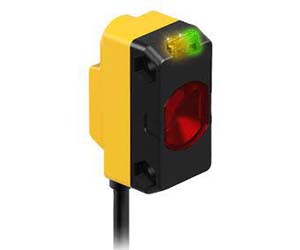 |
Receiver | 0…3000 mm | NO/NC, PNP | ≤ 400 Hz | Cable, 2 m, PVC |
| QS18VP6LPQ8 | 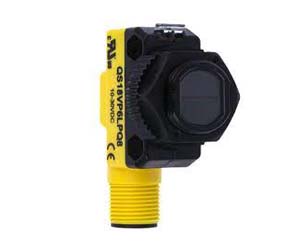 |
Polarized | 50…3500 mm | NO/NC, PNP | ≤ 800 Hz | Connector, M12 × 1, PVC |
| Q4XFPLAF310-Q8 | 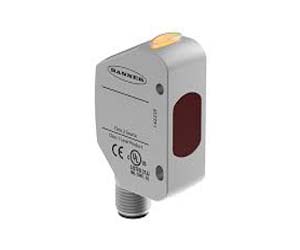 |
Background/foreground suppression | 35…310 mm | NO/NC, PNP | – | Connector, M12 × 1, PVC |
| QS18EP6LPQ8 | 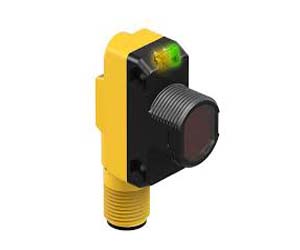 |
Polarized | 50…3500 mm | NO contact, PNP | ≤ 833 H | Connector, M12 × 1, PVC |
| S18SP6RQ | 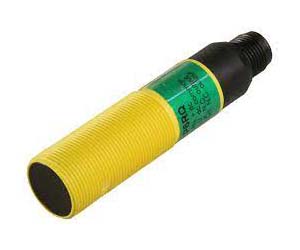 |
Receiver | 0…20000 mm | Connection programmable, PNP | ≤ 160 Hz | Connector, M12 × 1, PVC |
Frequently Asked Questions
How does a photoelectric sensor work?
A photoelectric sensor operates using light emission and reception. It emits light from the Emitter, which the Receiver captures. Light interruption or reflection by an object alters the light received. The Receiver senses this variation, transforming it into electrical signals. This mechanism enables object detection and positioning.
Why do we use photoelectric sensors?
Photoelectric sensors are vital for detecting objects’ presence, absence, or distance. They utilize a light source, typically infrared, and a photoelectric receiver. These sensors are extensively employed in industrial manufacturing processes. Their accuracy and reliability make them indispensable in automation and quality control.
What are the examples of photoelectric sensors?
Photoelectric sensors have diverse applications across various industries. They detect and orient objects on production lines, ensuring efficient process flow. These sensors also count items accurately, aiding in inventory management. Additionally, they enhance safety by stopping automatic doors from closing on obstacles. Their versatility makes them essential in automation and safety systems.
Please Share your Turck Photoelectric Sensor requirement to the mobile number +91 79955 44066

